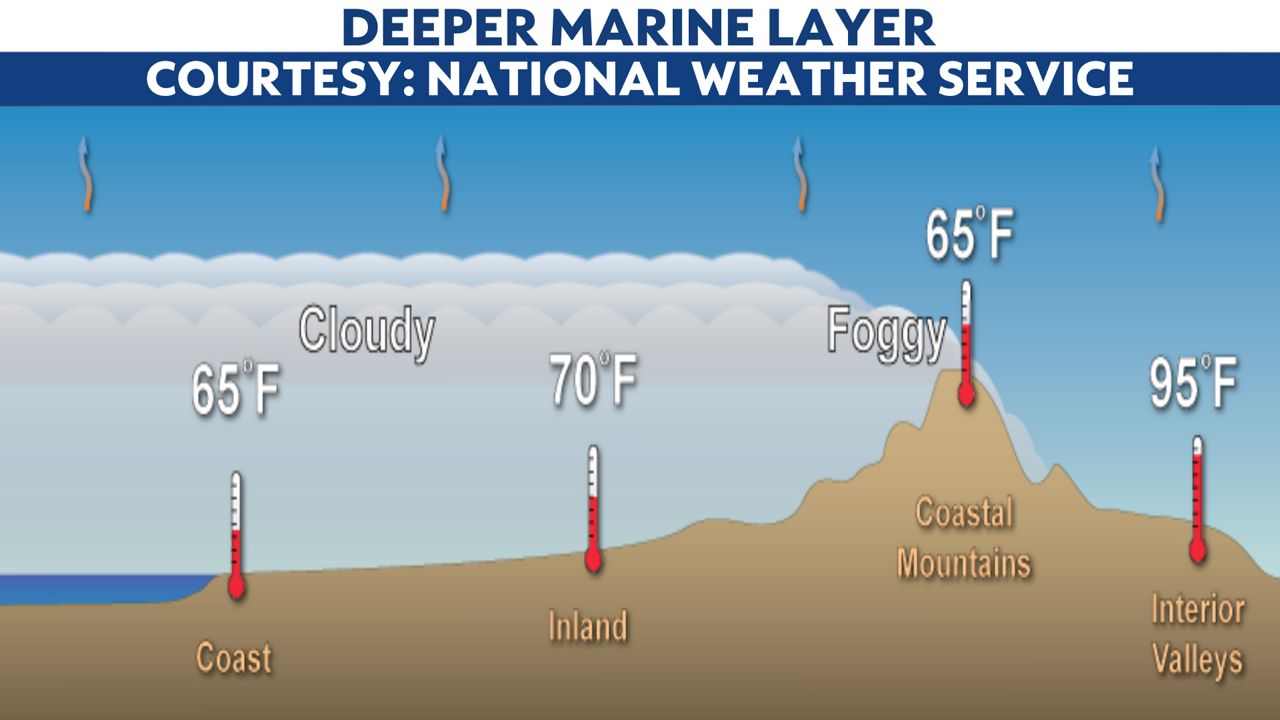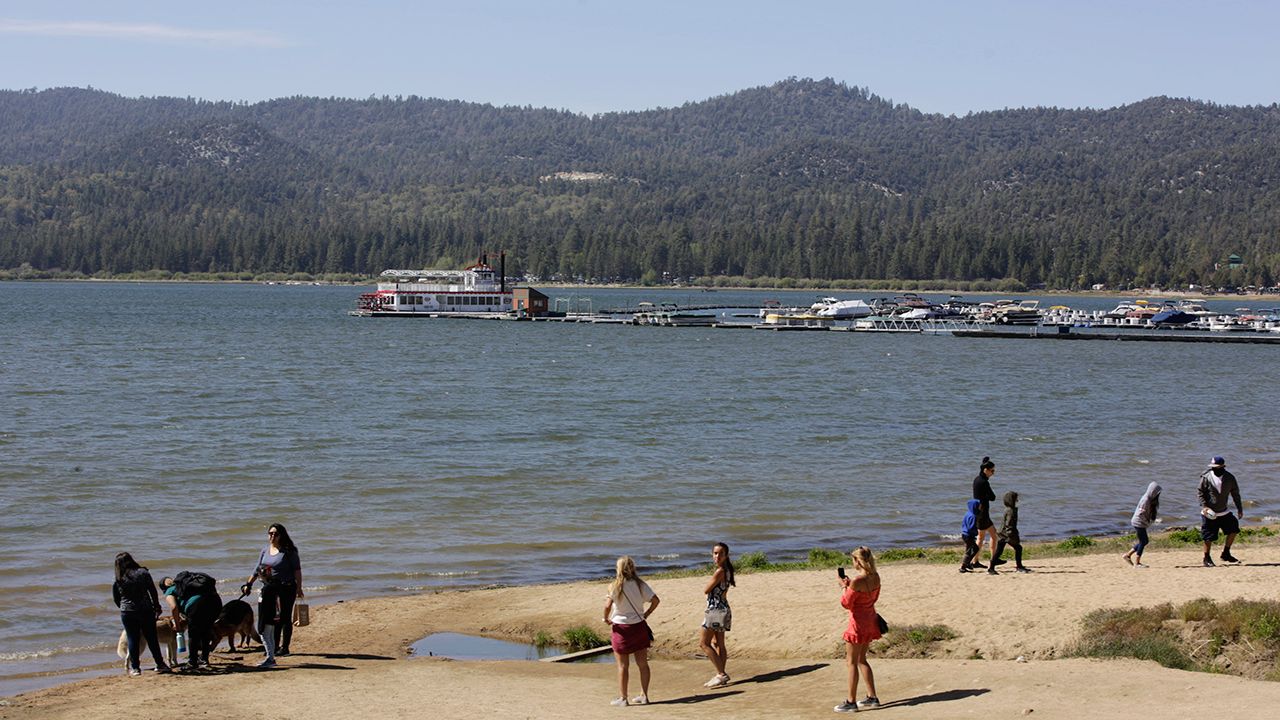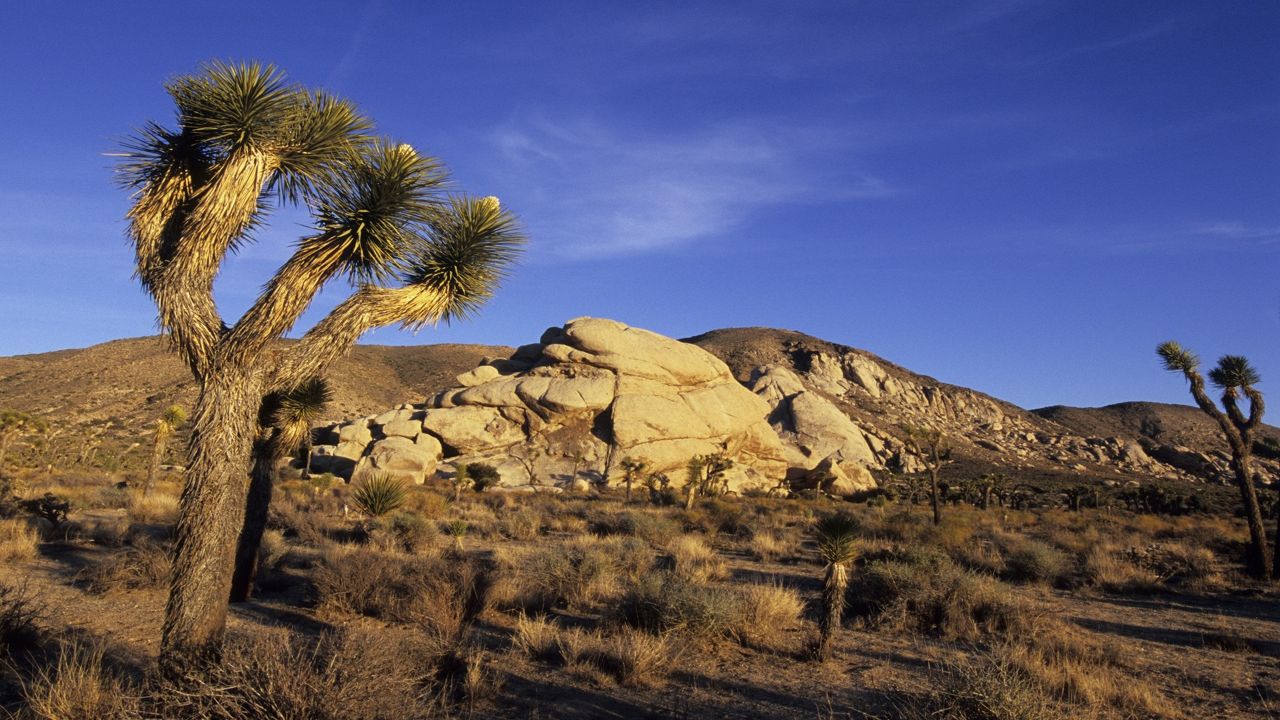SoCal is such a great place to live because it has a climate for everybody, all at the same time.
We call these areas microclimates because they all coexist in an area that is close to 100 miles from west to east and another 100 miles from north to south.
Microclimates are most prominent during early summer when the sun angle is highest and the sun's rays are strongest. This is also the time when ocean waters are still cool.
Temperatures near the coast highly depend on ocean temperatures, while desert temperatures depend on the intensity of the sun. SoCal is bound by the desert to the east and the ocean to the west.
Between these two regions are mountain chains that run from north to south and east to west.
SoCal mountains and hills prevent marine air (also known as the marine layer) from making it to the valleys and deserts.
When high pressure is in control of SoCal weather, it presses down on the marine layer. Sometimes it squishes it down to a mere 500 feet. That means that the marine air can't even make it over some of the smaller hills in SoCal.
This is when temperatures at the beaches are in the mid-60s and just 15 to 30 miles away, temperatures can be 100+ degrees. In the deserts, temperatures can be as high as 115 degrees while the beaches chill in the 60s.

So, roughly from west to east, here are SoCal's microclimates.
First, we have the coastal climate where the marine layer dominates and average temperatures in early June range from 65 to 72 degrees. Marine layer clouds also dominate the weather in June.
Then we have the basin communities. The marine air frequents this area because there are very small barriers that can't prevent the marine layer from pushing through in the overnight hours. Average temperatures in early June range from 74 to 77 degrees.
Next we have the inland valleys and Inland Empire which share similar climates. Temperatures in early June here range between 80 and 83 degrees.
Separating the above microclimates from the deserts, we have the mountains. Here, temperatures depend on elevation.

The highest peaks rise more than 10,000 feet above the oceans, which are only 50 miles away. Big Bear Lake, a popular resort at about 6,700 feet above sea level, averages 71 degrees on June 1.
On the north and east side of the Los Angeles County mountains, we have the high desert. High temperatures in early June range from 87 to 90 degrees.
Lastly, the hottest microclimate in SoCal is the Coachella Valley, which is also known as the low desert. This is where Palm Springs is home to. The average temperature on June 1 is 100 degrees!
So, in June, you can go from the mid-60s at the coast to 100 degrees in the deserts. When there is no traffic, you can travel to any of these areas within 90 minutes to two hours.
Therefore, SoCal has a climate for everybody. SoCal is great for its many easy weekend getaways because it is a short car ride between any of the microclimates. If you don't like the heat, head to the coast. If you don't like it cool and cloudy, head to the desert.



